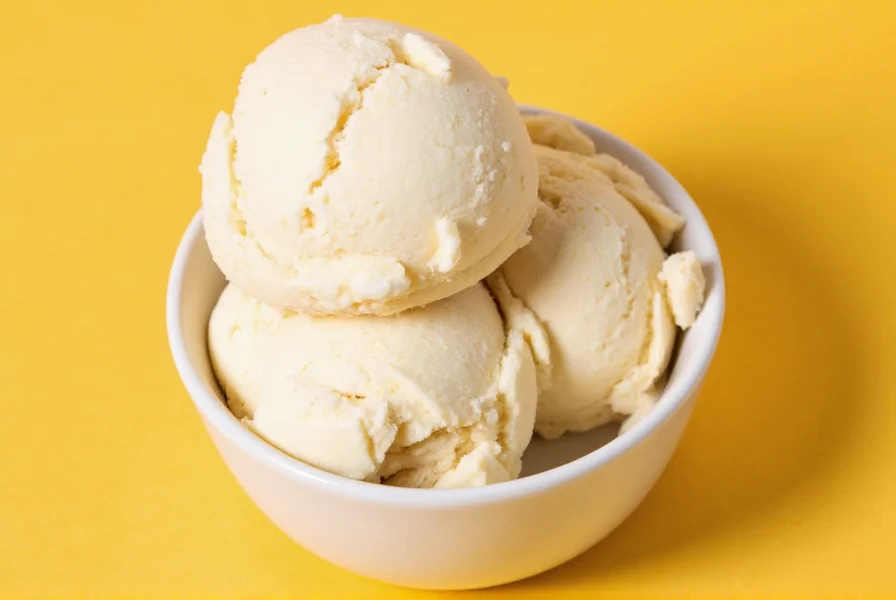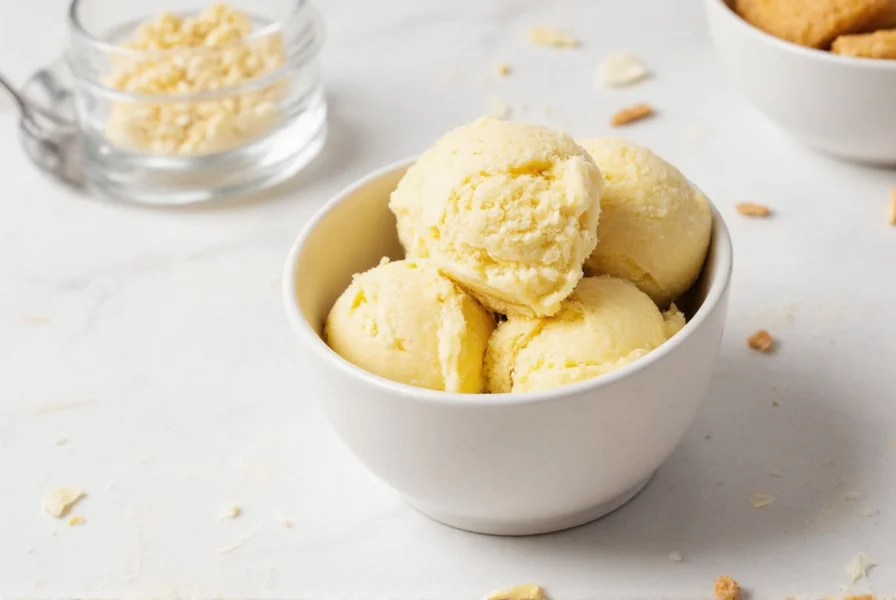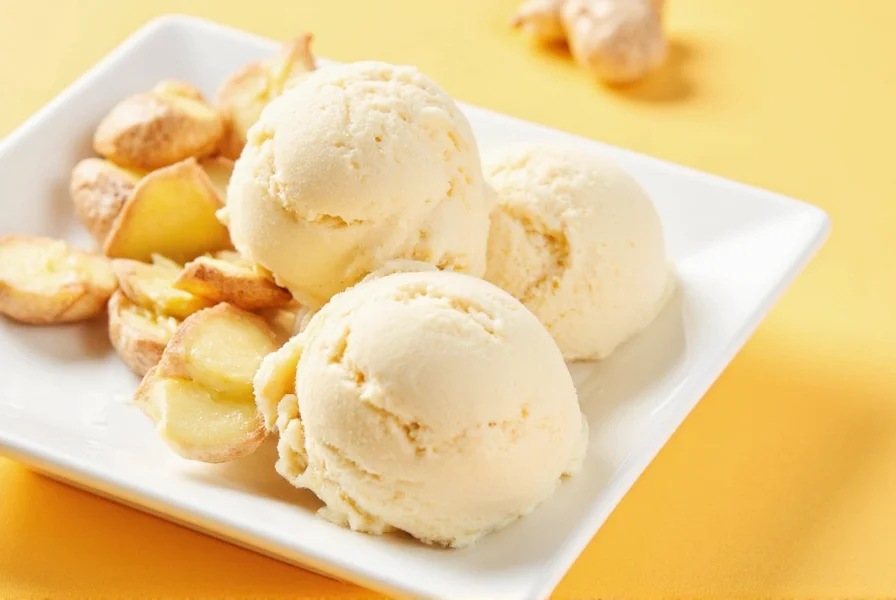The Unique Flavor Profile of Ginger Ice Cream
Ginger ice cream offers a complex sensory experience that sets it apart from conventional frozen desserts. Unlike artificial ginger-flavored products, authentic ginger ice cream showcases the nuanced characteristics of real ginger root. The flavor profile features a bright, citrusy top note followed by a distinctive warmth that builds gradually rather than delivering an immediate spicy punch.
When properly crafted, ginger ice cream achieves a delicate balance between sweet creaminess and ginger's natural pungency. The quality of ginger used significantly impacts the final product—fresh young ginger provides a more floral, less fibrous flavor compared to mature ginger, which offers deeper, woodier notes with more pronounced heat. Many artisanal producers use a combination of fresh ginger juice, grated ginger, and sometimes candied ginger pieces to create layered flavor dimensions.

Historical Context and Cultural Significance
Ginger's use in frozen desserts traces back to ancient Asian culinary traditions where ginger's digestive properties made it a natural complement to rich foods. Historical records indicate that ginger-flavored ices appeared in Chinese cuisine as early as the Tang Dynasty (618-907 CE), though the modern ice cream version developed later through cultural exchanges.
In contemporary culinary practice, ginger ice cream has gained international recognition as chefs worldwide appreciate its versatility. Japanese cuisine often features ginger ice cream as a palate cleanser between courses, while Caribbean and West African traditions incorporate ginger into frozen treats using local varieties of the root. The dessert's global journey reflects ginger's status as one of the world's most widely traded spices for over 3,000 years.
Health Considerations and Nutritional Aspects
Ginger ice cream offers potential health benefits derived from its primary flavoring ingredient. Ginger contains gingerol, a bioactive compound with anti-inflammatory and antioxidant properties. While the concentration varies based on preparation methods, traditionally made ginger ice cream using substantial amounts of fresh ginger provides more potential benefits than versions relying solely on ginger extract.
| Preparation Method | Ginger Content | Estimated Gingerol per Serving | Digestive Benefit Potential |
|---|---|---|---|
| Traditional (fresh ginger) | 2-3 tbsp grated ginger per pint | Moderate | High |
| Extract-based | 1-2 tsp ginger extract per pint | Low | Minimal |
| With crystallized ginger | 1/4 cup pieces + ginger infusion | High | Very High |
It's important to note that while ginger offers potential benefits, the sugar and fat content in ice cream means these advantages should be considered within the context of overall dietary patterns. For those seeking ginger's digestive properties without excessive sugar, smaller portions of high-ginger-content ice cream may provide the optimal balance.
Perfect Pairings and Serving Recommendations
Ginger ice cream's distinctive flavor profile makes it exceptionally versatile for pairing with other foods. The spice cuts through richness while complementing both sweet and savory elements. Culinary experts recommend several classic combinations that highlight ginger ice cream's unique qualities:
- Fruit pairings: Peaches, mangoes, and pineapple create refreshing contrasts where the fruit's sweetness balances ginger's heat
- Baked goods: Warm apple pie, pear tart, or gingerbread provide textural contrast and flavor synergy
- Chocolate: Dark chocolate (70% cacao or higher) creates a sophisticated sweet-spicy-bitter profile
- Cheese courses: Served alongside mild blue cheeses or aged cheddars as a palate cleanser
- Cocktail pairings: Works beautifully with bourbon, rum, or ginger-forward craft cocktails
For optimal flavor experience, allow ginger ice cream to temper at room temperature for 3-5 minutes before serving. This softens the texture slightly, releasing more aromatic compounds and creating a smoother mouthfeel that better showcases the ginger's complexity.
Crafting Quality Ginger Ice Cream at Home
Creating exceptional ginger ice cream requires attention to ginger preparation and infusion techniques. The most flavorful results come from using fresh ginger root rather than powdered alternatives. For homemade ginger ice cream, select firm, smooth-skinned ginger with tight knobs and minimal wrinkles.
Professional chefs recommend these preparation methods for optimal flavor extraction:
- Peel and thinly slice fresh ginger (about 1/8 inch thick)
- Simmer slices in cream mixture for 20-30 minutes to extract flavor without bitterness
- Strain through fine mesh sieve, pressing gently to extract maximum flavor
- For additional texture, fold in small pieces of crystallized ginger after churning
Those preferring less intense heat can reduce ginger's pungency by adding a small amount of acid (like lemon juice) to the cream mixture, which helps mellow the spicier compounds while preserving ginger's distinctive flavor profile.

Finding Quality Ginger Ice Cream
When searching for premium ginger ice cream, look for specific indicators of quality craftsmanship. Artisanal producers typically list the type of ginger used (fresh, young ginger being preferable) and avoid artificial flavors or excessive stabilizers. The ingredient list should feature ginger prominently rather than hiding it among numerous additives.
Specialty grocery stores, Asian markets, and premium ice cream shops often carry higher-quality ginger ice cream options. For those interested in homemade ginger ice cream recipe variations, many culinary resources offer adaptations for dietary preferences including ginger ice cream with coconut milk for dairy-free versions and reduced-sugar preparations that maintain flavor integrity.
Frequently Asked Questions
What makes ginger ice cream different from regular ice cream?
Ginger ice cream features the distinctive spicy-sweet flavor of real ginger root infused into the dairy base. Unlike regular ice cream, it contains gingerol compounds that create a warming sensation alongside the cold temperature. Quality versions use fresh ginger rather than artificial flavoring, resulting in complex flavor notes ranging from citrusy to woody with varying heat levels.
Does ginger ice cream actually contain health benefits?
Yes, when made with substantial amounts of fresh ginger, it contains gingerol compounds with anti-inflammatory and digestive properties. However, these benefits must be considered in context—the sugar and fat content means moderation is key. Higher-quality versions using 2-3 tablespoons of fresh ginger per pint offer more potential benefits than those using minimal ginger or artificial flavoring.
How can I reduce the spiciness of ginger ice cream if I prefer milder flavor?
To create a milder ginger ice cream, use young ginger which has less heat, reduce the amount of ginger used, or add a small amount of acid like lemon juice to the cream mixture before churning. Some recipes incorporate honey which naturally balances ginger's heat. For homemade versions, you can also strain the ginger infusion multiple times to reduce the concentration of spicy compounds while retaining flavor.
What foods pair best with ginger ice cream?
Ginger ice cream pairs exceptionally well with stone fruits like peaches and mangoes, warm apple pie, dark chocolate (70% cacao or higher), and gingerbread. It also complements certain cheeses like mild blue varieties. The spice cuts through richness while enhancing complementary flavors, making it versatile for both dessert courses and as a palate cleanser between savory dishes.
Can I make dairy-free ginger ice cream that still has authentic flavor?
Yes, you can create excellent dairy-free ginger ice cream using coconut milk as a base, which complements ginger's flavor profile naturally. Full-fat coconut milk provides the necessary creaminess, while fresh ginger infusion ensures authentic flavor. Some recipes combine coconut milk with cashew cream for added richness. The key is using sufficient fresh ginger and proper infusion techniques to achieve the characteristic ginger flavor without dairy.











 浙公网安备
33010002000092号
浙公网安备
33010002000092号 浙B2-20120091-4
浙B2-20120091-4